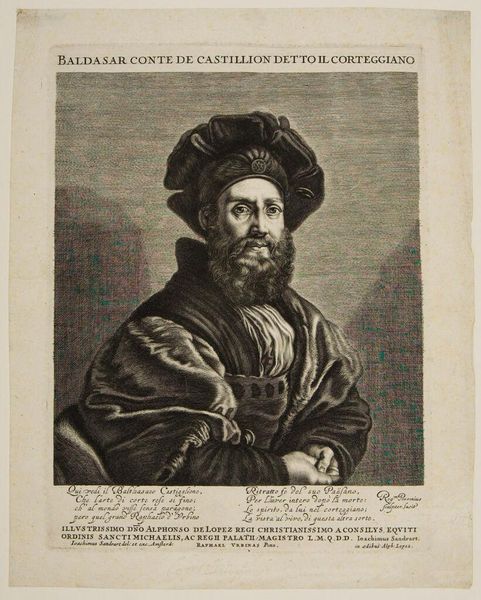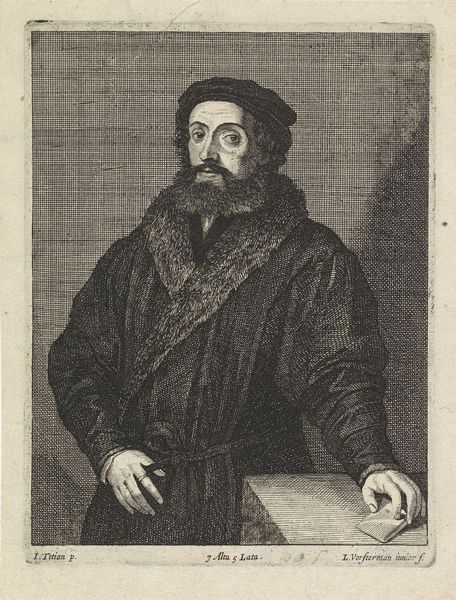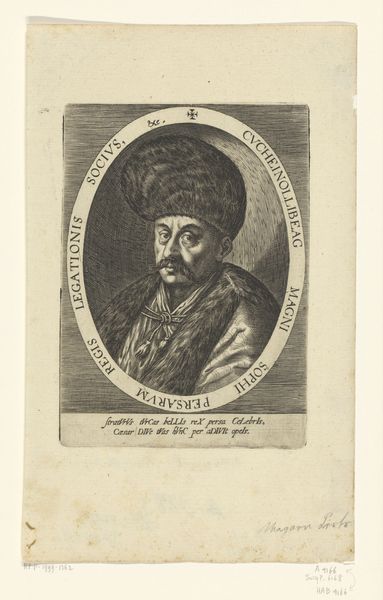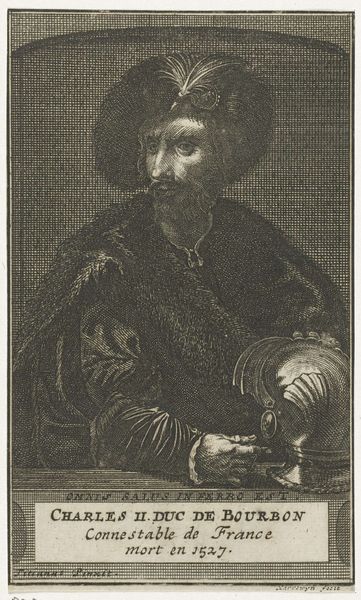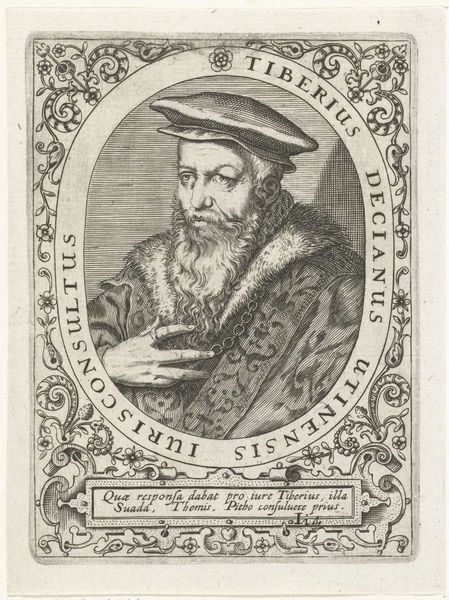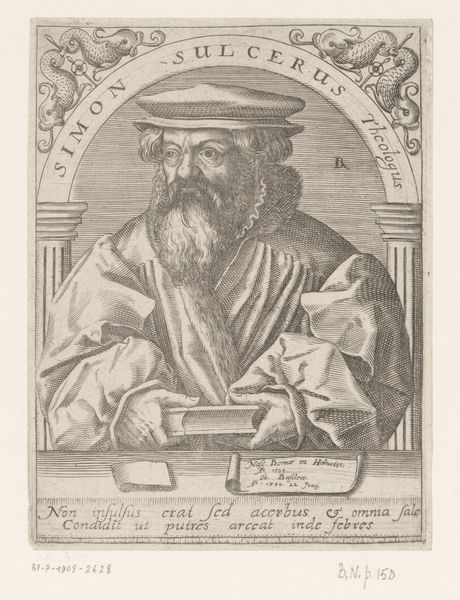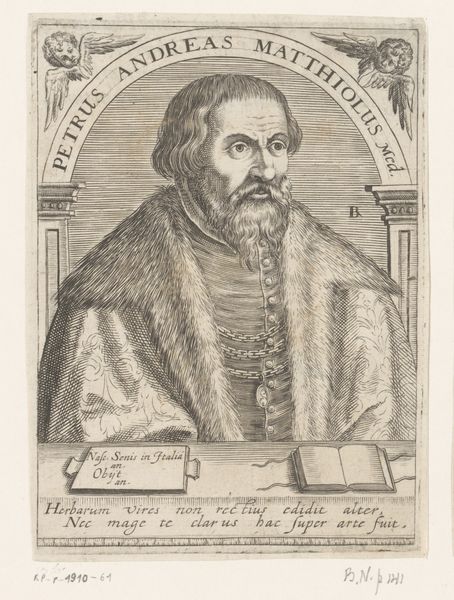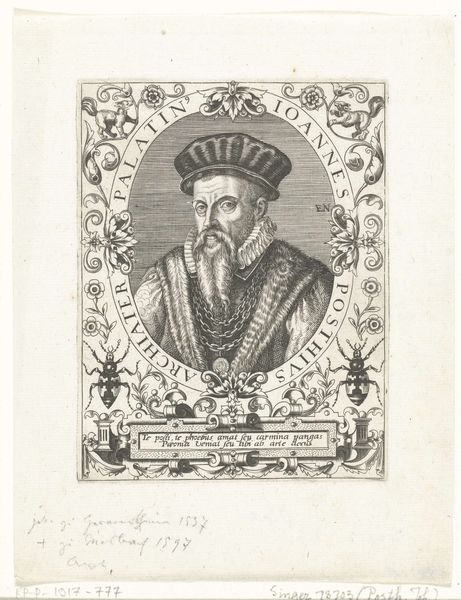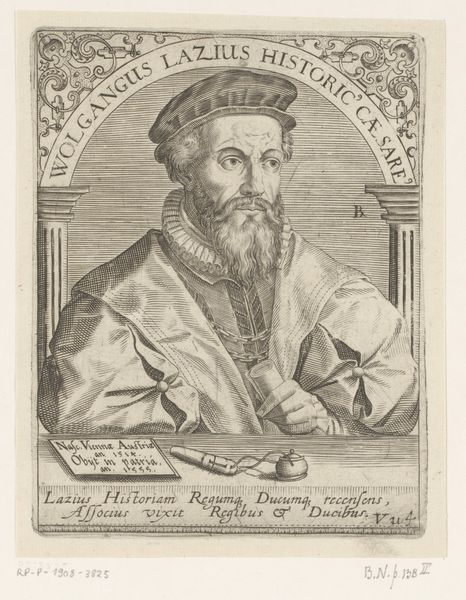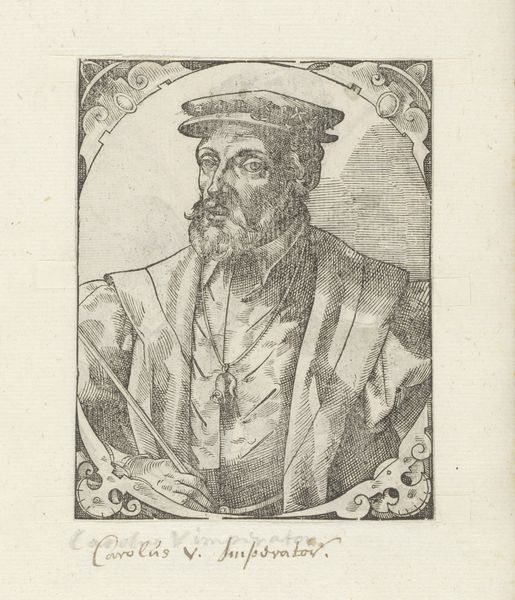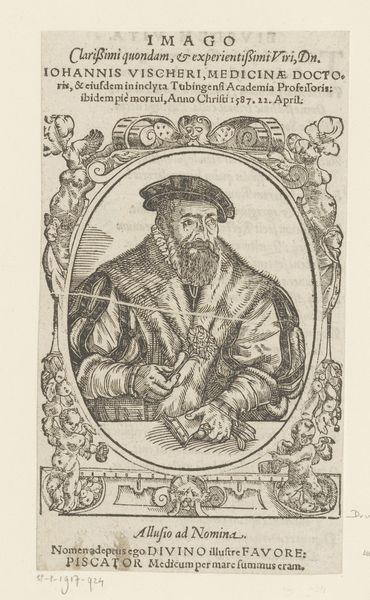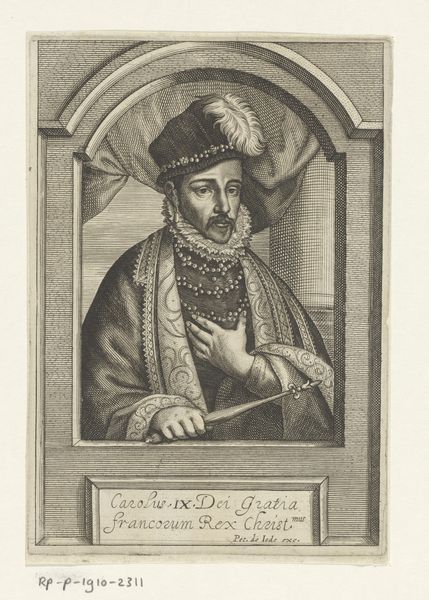
print, engraving
#
portrait
#
baroque
# print
#
history-painting
#
engraving
Dimensions: height 175 mm, width 123 mm
Copyright: Rijks Museum: Open Domain
This is a portrait of Charles de Bourbon, etched by Arnold Loemans. Look closely and you’ll see the distinctive hatching technique of etching, where lines are incised into a metal plate, which is then inked and printed. The varying density of these lines creates the illusion of shadow and form, bringing the figure to life. The rich textures of his fur-lined coat and hat, the gleam of his armor – all are rendered through this meticulous process. The choice of printmaking, rather than painting, speaks to the democratization of images. Prints could be reproduced and disseminated widely, making the likeness of important figures accessible to a broader audience. This was a significant shift, reflecting a changing social landscape where power and influence were no longer solely the domain of the elite. The labor-intensive process of etching, requiring skill and precision, underscores the value placed on craftsmanship in this period. Considering these aspects helps us understand the portrait not just as a representation of an individual, but as a product of its time, reflecting the social, economic, and technological forces at play.
Comments
No comments
Be the first to comment and join the conversation on the ultimate creative platform.
